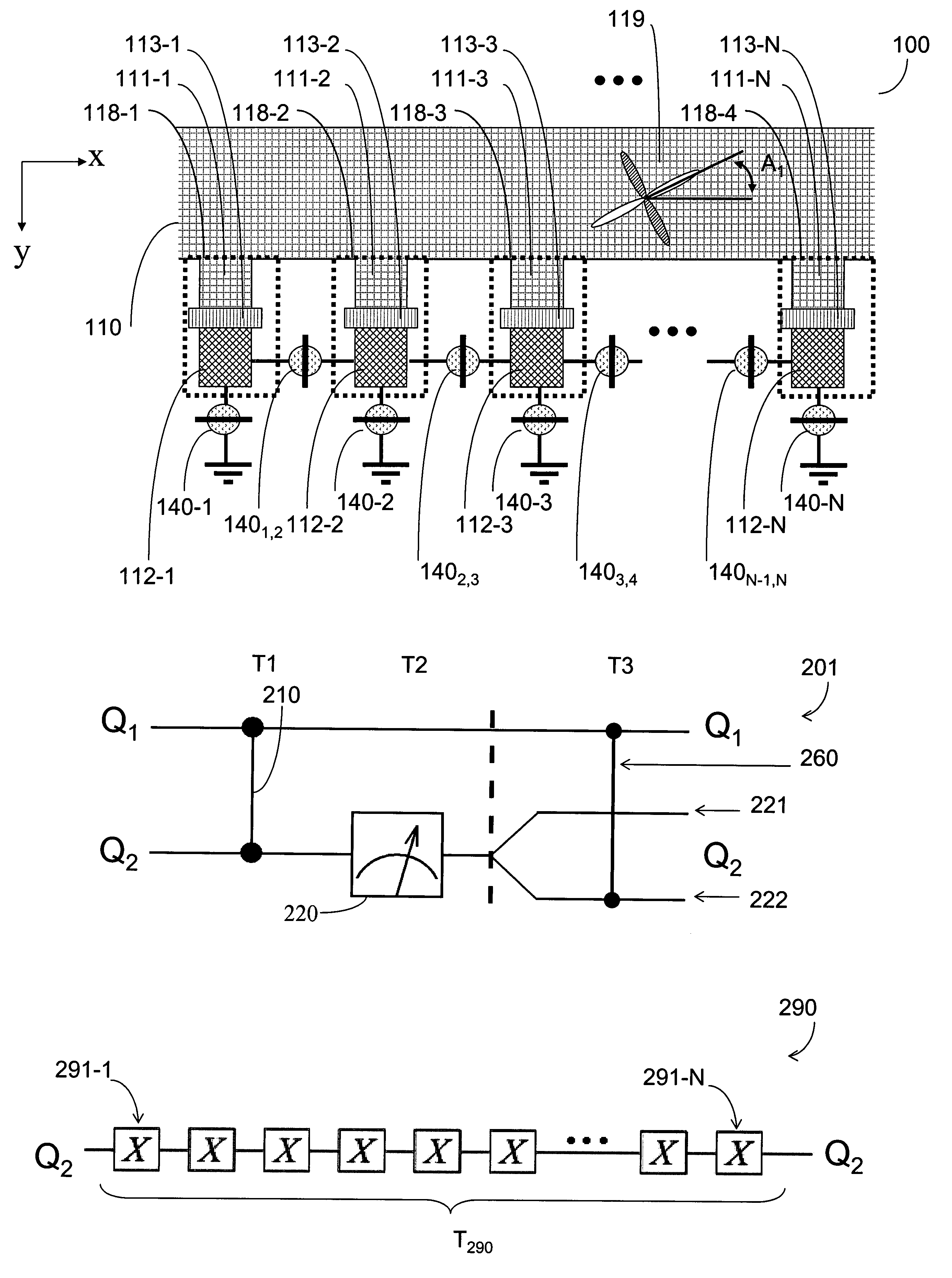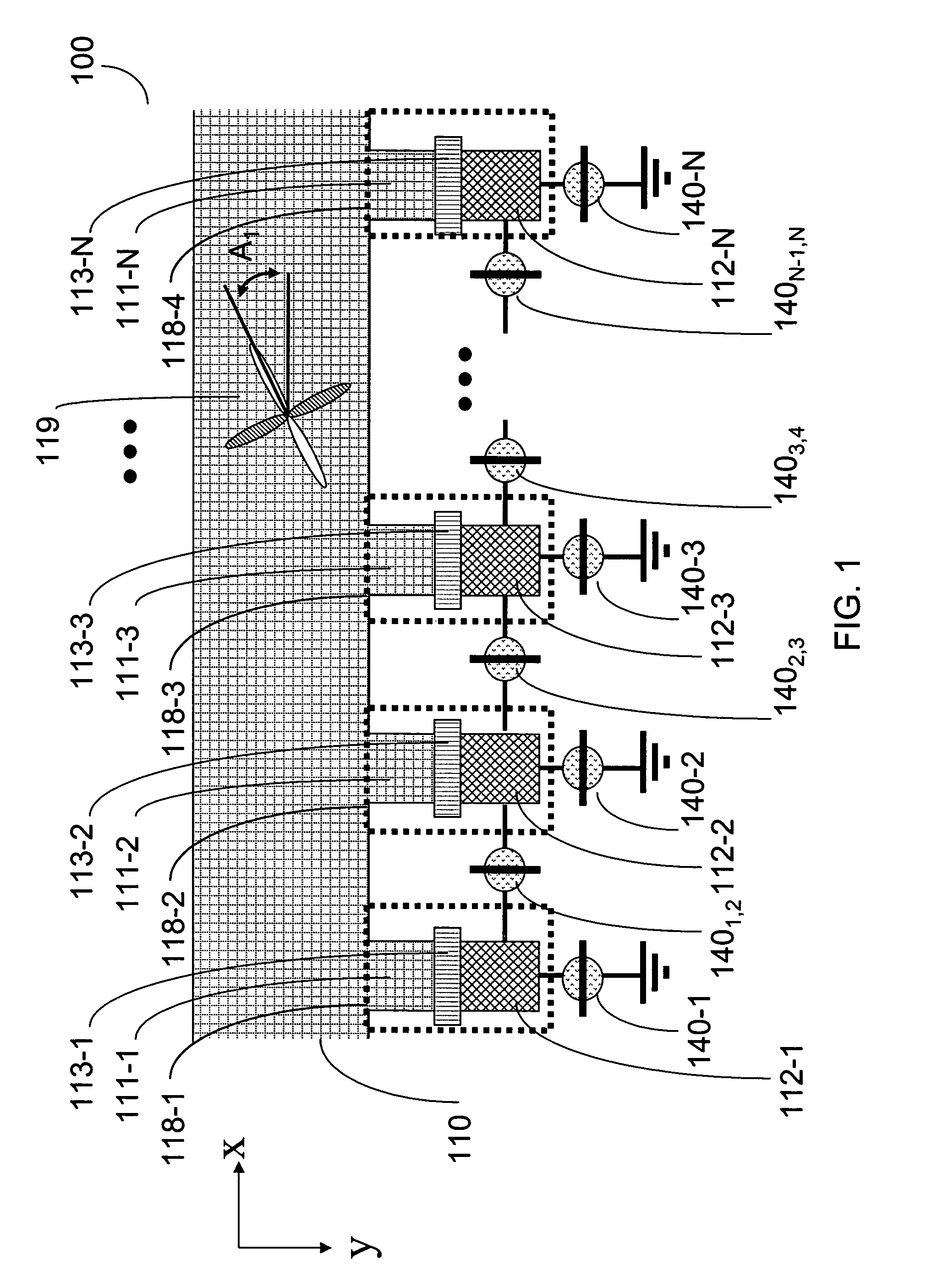Methods for single qubit gate teleportation
- Summary
- Abstract
- Description
- Claims
- Application Information
AI Technical Summary
Benefits of technology
Problems solved by technology
Method used
Image
Examples
Embodiment Construction
[0058]One aspect of the present invention provides methods for performing a single qubit gate teleportation in order to remove the necessity for hard-to-implement quantum gates in quantum computing devices such as quantum register 100 (FIG. 1). Such methods therefore alleviate the need for specialized hardware. For example, some embodiments of the present invention provide a method for single qubit gate teleportation in order to replace a Pauli Z gate. Therefore, the present invention allows for universal quantum computation using a reduced set of implementation constraints.
[0059]Embodiments of the present invention include a set of quantum logic gates that are universal while at the same time only employ control over exchange interactions and single- and two-qubit measurements. According to one aspect of the present invention, any single-qubit unitary operation includes a single-qubit gate teleportation. This single-qubit gate teleportation includes qubit-qubit interaction operatio...
PUM
 Login to View More
Login to View More Abstract
Description
Claims
Application Information
 Login to View More
Login to View More - R&D
- Intellectual Property
- Life Sciences
- Materials
- Tech Scout
- Unparalleled Data Quality
- Higher Quality Content
- 60% Fewer Hallucinations
Browse by: Latest US Patents, China's latest patents, Technical Efficacy Thesaurus, Application Domain, Technology Topic, Popular Technical Reports.
© 2025 PatSnap. All rights reserved.Legal|Privacy policy|Modern Slavery Act Transparency Statement|Sitemap|About US| Contact US: help@patsnap.com



